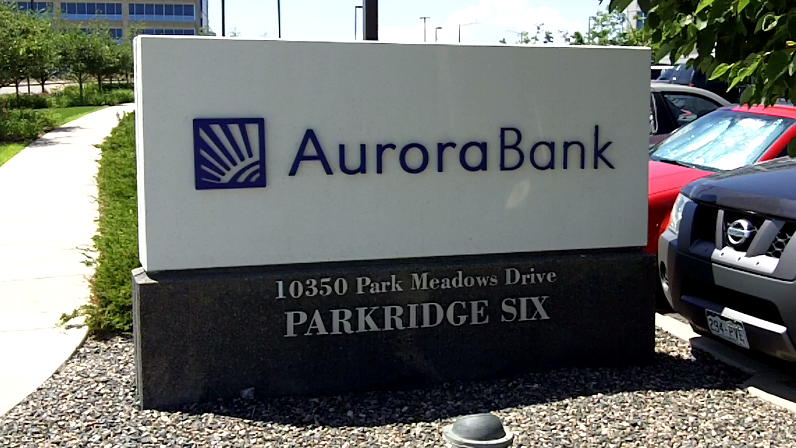Do an internet search on mortgage fraud and try to find even a single case of a prosecutor going after a mortgage broker or lender for defrauding a borrower. I dare you. If you find a case please let me know. There are plenty of cases involving straw buyers and others who have defrauded the lenders but no prosecutions where the borrower was defrauded. There have been no significant prosecutions for mortgage origination fraud, yet that is the precise crime that precipitated the Great Recession and the near total collapse of the economy. The prosecutors who claim to be so tough on mortgage fraud will not touch mortgage origination fraud including predatory lending. The only explanation has to be that there were agreements orchestrated by federal prosecutors all across the country, with the concurrence of state and local prosecutors, not to prosecute mortgage origination fraud and predatory lending.
On May 20, 2009 at the signing into law of both the Helping Families Save Their Homes Act and the Fraud Enforcement and Recovery Act, President Obama said, “[a]nd that’s why this bill nearly doubles the FBI’s mortgage and financial fraud program, allowing it to better target fraud in hard-hit areas. That’s why it provides the resources necessary for other law enforcement and federal agencies, from the Department of Justice to the SEC to the Secret Service, to pursue these criminals, bring them to justice, and protect hardworking Americans affected most by these crimes. It’s also why it expands DOJ’s authority to prosecute fraud that takes place in many of the private institutions not covered under current federal bank fraud criminal statutes — institutions where more than half of all subprime mortgages came from as recently as four years ago.”
So what has Attorney General Eric Holder, the President’s point person on mortgage fraud prosecutions, done to implement these laws? He has lied about how many prosecutions have taken place. In August 2013 reporters from Bloomberg wrote that the 2012 Holder press release fudged the number of mortgage fraud prosecutions brought by the Department of Justice by 400 percent. As Rolling Stone contributor Matt Taibbi pointed out, after the revelations in the Bloomberg piece, the DOJ went so far as to edit the press release to reflect the correct numbers.
That brings us to California Attorney General Kamala Harris. On May 23, 2011 Harris announced the creation of the California Attorney General’s Mortgage Fraud Strike Force. At the press conference shown in the video below she declares that the Task Force “…is a new, multidivisional division in the Department of Justice, designed to protect innocent homeowners and bring to justice those who would defraud them. This is the first such strike force in the history of the Department of Justice. And as California’s real estate boom set a trend for the rest of the nation, so will our policing of its dark side.”
As Harris said, “First is the Consumer Enforcement Team, which will take on the worst of the scams of the consumer arena, including predatory lending, unfair business practices, deceptive marketing and loan modification, and foreclosure scams.” And she leaves the best for last when she says “As a career prosecutor, I believe there should be accountability and consequences for wrongdoing and crime… and it for that reason we created this unit.”
I still have not seen any evidence of Harris’ office bringing any prosecutions for predatory lending or mortgage origination fraud, and very few of any other type of mortgage fraud. So far, Harris’ policing of the dark side has not even begun to set a trend for the nation.
The same day Harris made her pronouncement about prosecuting mortgage fraud of all types, Alameda County District Attorney Nancy O’Malley put out her own press release beginning with the following:
Alameda County District Attorney Nancy E. O’Malley announces the creation of a new program entitled the Homeowner Education and Loan Protection (H.E.L.P.) Program that is designed to address crimes involving real estate on a multi-disciplinary, multi-system collaborative basis using education, prevention, and prosecution to target real estate fraud. The DA’s program will address fraud within Alameda County and will also work in conjunction with the California Attorney General’s Office to build a comprehensive statewide response to these crimes, an effort unveiled today in Los Angeles by Attorney General Harris.
The Alameda County DA’s new program will serve to protect a victim’s home, prevent large-scale scams, and hold individual criminal accountable. H.E.L.P. will partner with law enforcement agencies, community groups, and financial institutions to provide effective and proven strategies to improve local, regional, and national capacity to identify, intervene in, investigate, and prosecute real estate fraud cases while supporting and educating homeowners against fraud.
We contacted O’Malley’s office in early 2013 with details about our mortgage origination fraud, including forging of a loan application. In response, on April 12,2013, Inspector Pat Johnson of the Consumer and Environmental Affairs in O’Malley’s office called me and stated that if we could identify the forger, the office would prosecute. We know of a handful of likely candidates who potentially committed the forgery, but cannot identify specifically who did it. Given the details we provided it would seem like a simple process for the experienced investigators in O’Malley’s office to determine the identity of the forger.
I contacted O’Malley’s office again in October and ended up talking with Deputy DA David Lim, who handles mortgage fraud cases for her office. I told Lim I had been unable to find any cases of the Alameda County DA’s office prosecuting mortgage origination fraud. Lim then revealed that in 2008 there was a meeting with Joe Russoniello, then the U.S. Attorney for the Northern District of California, along with State and local prosecutors. According to Lim the group agreed it was too hard to prosecute mortgage origination fraud (predatory lending) because it can be difficult to prove whether the lender or the borrower committed the fraud. In other words, federal, State and local prosecutors agreed none of them would prosecute mortgage origination fraud, no matter how egregious. This in spite of the fact that they have all made public proclamations they would vigorously pursue these cases. Per the 2008 agreement the Alameda County DA’s office has not and will not prosecute mortgage origination fraud.
What we still do not know is if the meeting hosted by a federal prosecutor in Northern California was duplicated across the country. The lack of prosecutions nationwide suggests it is very likely the case. Clearly, policies started under the Bush administration have not been changed by Obama, just as the policies begun under the predecessors of AG Harris and DA O’Malley have not changed. More frightening is that the same people who perpetrated fraud on borrowers are still in business. Most mortgage brokers are licensed by the states, yet they have paid no price for their misconduct. Licenses need to be revoked, and some ethics and honesty restored to the business. Without prosecutions of this criminal conduct which has destroyed so many lives, there is no incentive for anyone in the industry to change their ways. It is time for Holder, Harris, O’Malley, and other prosecutors to live up to their words.
Update 12/16/2013: Today in the New York Times Adam Liptak has a piece on Federal Judge Jed S. Rakoff’s essay in the New York Review of Books lambasting federal prosecutors for failing to charge even a single prominent figure in the mortgage debacle. As Mr. Lipotak said:
Judge Rakoff also has no patience with Attorney General Eric H. Holder Jr.’s statement to Congress that some prosecutions should be approached with caution because they may “have a negative impact on the national economy, perhaps even the world economy.”
Judge Rakoff says that “this excuse — sometimes labeled the ‘too big to jail’ excuse — is disturbing, frankly, in what it says about the department’s apparent disregard for equality under the law.”



